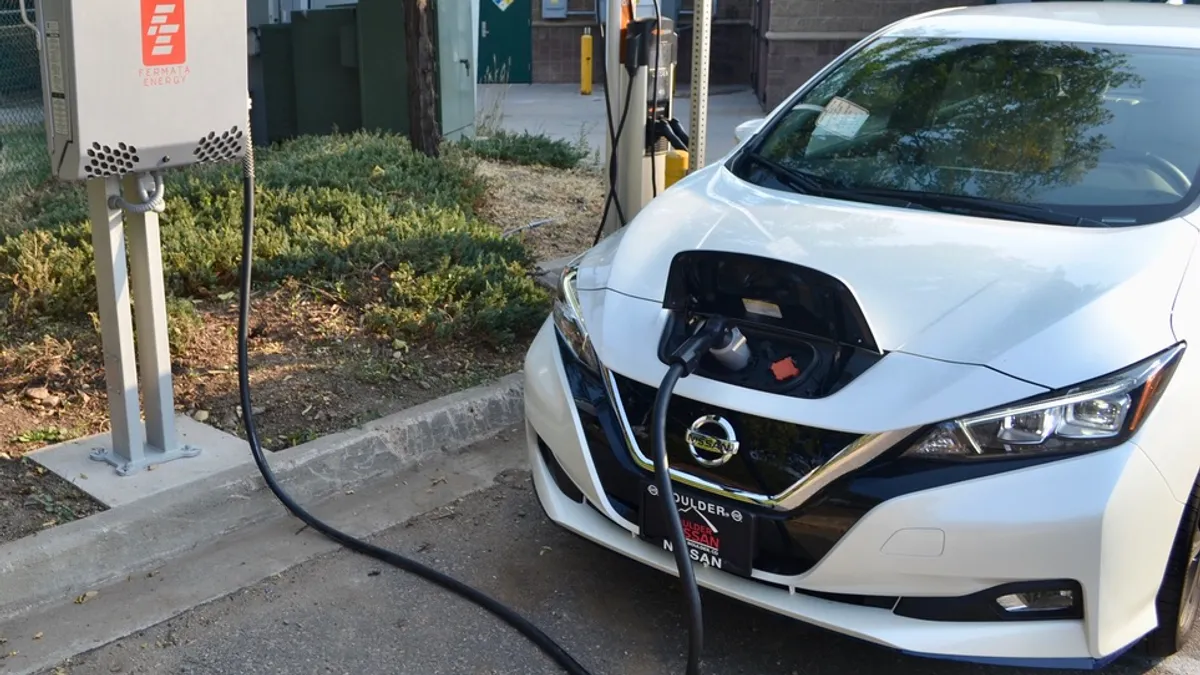The following is a contributed article by Abigail Anthony, a commissioner with the Rhode Island Public Utilities Commission.
Electrify everything! This rallying cry has recently made its way to the forefront of the national climate debate, as advocates, companies, and even the President himself tout the climate benefits of electrification. Replacing an oil or natural gas heating system or a gasoline vehicle with an electric-powered alternative is a straightforward way to reduce greenhouse gas emissions.
When customers fuel these new products using cleaner and cleaner electricity, they will reduce climate pollution compared to the status quo. And, in case you haven't noticed, the pilot testing of these products is long since completed — it would be a stretch to describe anyone making the switch today as an "early adopter." For the good of the planet, it's time to go to scale.
The challenge is how to expand consumer adoption and speed up the transition to electric cars and efficient electric heating systems. There's a lot of room for error in creating policies and programs to electrify, like how to motivate consumers to purchase electric vehicles and heating systems and how to reliably deliver more and more affordable clean electricity. The wrong approach will send the wrong price signals to consumers.
Two things need to be true to motivate consumers to switch to cleaner electric fuel. First, electric vehicles and heating systems need to be affordable at the point of purchase. Second, clean electricity must be as cheap as possible, and cheap relative to transportation and heating fuels. At the beginning, these conditions are effectively independent and program design might not matter, but on a large scale they can collide.
Today, in my state of Rhode Island, a consumer might need a rebate of over $10,000 for their purchase of an efficient heat pump to make economic sense when compared to an oil heat system. This is money worth raising because it will be well-spent. We could, as others have done, raise the rebate funds by adding program charges to the electric bill. This approach might jumpstart the transition, but at a scale that will actually mitigate climate change — in other words, raising tens of millions of dollars annually in Rhode Island alone — the approach is counterproductive because the program charge increases the price of electricity relative to transportation and heating fuels. Increasing the price of electricity is a bad way to convince consumers to use more of it.
The next challenge is powering these products with clean electricity. Electric customers already pay for policies to lower the carbon pollution from today's electricity use. In a future when most vehicles and heating systems are plugged into a clean electric system, we will need to replace existing fossil fuel power plants, build more clean power sources, and expand the transmission and distribution systems. These new investments will provide clean, reliable power for transportation and heating, but if only electric customers bear the cost of decarbonizing energy use, electric rates will struggle to compete with oil and gas prices and electrification won't be very attractive to consumers.
Better approaches to motivate customers to buy electric vehicles and efficient heating systems raise the money from products and fuels that cause climate pollution. This design can provide the funds to help purchase new equipment and increases the cost of polluting fuels relative to clean fuels, so all fuels compete on a level playing field. If that approach isn't possible, we can source the funds from society through some other means that reflects how we all benefit by avoiding climate change. Either way, collecting the funds needed to accelerate electrification from anywhere other than electric bills will be a more productive approach than adding charges to electric bills. Congress and state governments can implement these preferable approaches; public utilities regulators, like me, are much more limited.
If we want everyone to benefit from electrification — not just those who can afford electric vehicles and new heating systems — electric utilities will have to control the cost of providing clean electricity. To avoid overbuilding the power system and sending the wrong price signals for electrification, regulators must focus utilities on investing in the most cost-effective options to serve new needs instead of expanding their business of investing in capital-intensive grid infrastructure.
The key role for electric utilities will be to invest just enough to meet the demand for clean power, nothing more and nothing less. Success will mean that electric rates stay low enough to attract transportation and heating consumers. Utilities' priority must be delivering clean, reliable power as efficiently as possible, so as a regulator, I'm skeptical when utilities propose that their role is to promote electrification with their ratepayers' money.
The stakes for climate change are high and the time left to electrify the nation's vehicles and buildings is shortening. We can be confident that electrification is a great bet for the climate. The wrong approach will price out electricity as a climate solution, but if we take care to send the right price signals, electrification will expand swiftly, efficiently and sustainably.






















